Autism Spectrum Disorder (ASD) is a complex neurodevelopmental condition that affects millions of individuals worldwide. Despite increased awareness and understanding of ASD, there are still many myths and misconceptions surrounding the condition. These myths can lead to misunderstandings and stigmatization, making it difficult for individuals with ASD to receive the support and care they need. In this blog, we will uncover 10 common myths about autism and provide evidence-based information to help dispel these misunderstandings. By shedding light on these myths, we hope to increase understanding and acceptance of individuals with ASD and promote a more inclusive and supportive society.
Understanding the Myths About Autism
Autism spectrum disorder (ASD) is a complex neurodevelopmental condition that affects individuals in diverse ways, influencing their communication, social interactions, and behavior. As awareness of autism has grown over the years, so too have the misconceptions and myths surrounding it. These myths can perpetuate stigma, lead to misunderstanding, and create barriers to acceptance and support for individuals on the spectrum.
Many people still hold outdated or inaccurate beliefs about autism, often shaped by media portrayals, anecdotal experiences, or a lack of information. For instance, the notion that all autistic individuals lack empathy or that they are incapable of forming meaningful relationships is not only misleading but also harmful. Such stereotypes can overshadow the individuality of each person on the spectrum, reducing them to a set of characteristics rather than recognizing their unique talents, challenges, and perspectives.
The importance of debunking these myths cannot be overstated. By addressing common misconceptions, we can foster a more inclusive society that values diversity and promotes understanding. This shift in perception is essential not only for the well-being of autistic individuals but also for their families, educators, and communities.
In this article, we will explore ten prevalent myths about autism, providing insights into the realities of the condition. Each myth will be examined in detail, highlighting the facts that counter these misconceptions. By educating ourselves and others, we can help create a more accurate narrative about autism and advocate for the rights and acceptance of those on the spectrum.
Myth #1: Autism is a Mental Illness
Autism is a neurological disorder, not a mental illness. The term “autism spectrum” refers to the wide range of symptoms that can be present in people with autism and their families. Autism spectrum disorders (ASDs) are characterized by difficulties with social interaction, verbal and nonverbal communication, and repetitive behaviours or interests.
Though it’s common for those on the spectrum to experience depression or anxiety at some point in their lives due to challenges related to their condition, these associated struggles do not define them.
Myth #2: People with Autism Cannot Communicate
It is true that people with autism often have trouble communicating, but this does not mean they cannot communicate at all. In fact, many people with autism are able to speak and understand language just as well as anyone else. However, some individuals may have difficulty expressing themselves verbally or nonverbally (such as through facial expressions).
Some people assume that if a person does not talk much or at all, he or she must be unable to communicate effectively. However, this is not always true; many individuals can use alternative methods of communication such as sign language or electronic devices like tablets or computers in order to express themselves more easily than spoken words alone would allow them too
Myth #3: People with Autism are Not Capable of Feeling Emotion
Myth #3: People with Autism are Not Capable of Feeling Emotion
It’s true that people with autism may have difficulties expressing their emotions and understanding the emotions of others. However, this does not mean that they do not feel them. In fact, many individuals with autism report feeling intense feelings of happiness, sadness and anger throughout their lives.
Many parents report that their children were quite emotional as babies but then lost these feelings as they grew older due to their limited ability to communicate those feelings verbally or nonverbally (for example through facial expressions). However, research shows that there is no difference between autistic children and other children when it comes to experiencing positive or negative emotions such as joy or anger; they just express them differently than neurotypical individuals do!
Myth #4: Autism is not genetic.
Studies have pointed to genetic factors as playing a significant role in the development of autism. For example, a study published in the journal Nature Genetics identified over 100 genes that are associated with an increased risk of autism.
Ultimately, the cause of autism is complex and likely involves a combination of genetic and environmental factors. While it’s important to continue researching the causes of autism, we know that screentime and vaccines are not the cause for Autism.
Myth #5: People with Autism Cannot Learn
This is a common myth, but it’s not true. While people with autism may learn differently than those without the condition, they can still learn and succeed in school. In fact, many people with autism are highly intelligent and have IQs well above average (although it’s important to note that not all people on the spectrum are gifted).
People on the spectrum often struggle to pick up social cues or follow directions from others because they have trouble understanding what other people mean when they speak or gesture–a condition known as “social communication disorder.” But this doesn’t mean these individuals can’t understand the information presented visually or verbally–they just need extra help learning how to interpret it correctly.
Myth #6: People with Autism Do Not Have Friends
While it’s true that people with autism may have fewer friends, they can still have them. Some people with autism may need help making friends, but that doesn’t mean they will never find someone who likes them for who they are. Sometimes a person with autism might feel more comfortable talking to someone online than in person, but this doesn’t mean that he or she doesn’t want other people in their life!
Myth #7: People with Autism Do Not Show Empathy
People with autism can show empathy, but they may have difficulty understanding and expressing it. They may also need help understanding and expressing their own emotions. For example, if you’re sad or angry, your loved one might need some guidance in how to comfort you.
Myth #8: People with Autism Cannot Work
This is a myth that needs to be debunked. People with autism can work and do so every day, but they may need help finding the right job and accommodations in their workplace. The National Autistic Society has a helpful guide to finding employment for people on the spectrum.
Myth #9: People with Autism Cannot Live Independently
This myth is false. Many people with autism have gone on to live independently, and some find it easier than others. The key to living independently is having the right support in place. This can include help with independent living skills (like cooking or cleaning) as well as finding the right housing options for your needs.
Myth #10: People with Autism Are Dangerous
This is a common misconception, but it’s important to remember that people with autism aren’t inherently dangerous. They may have behaviours that need to be managed and/or help manage challenging behaviours, but they are not inherently dangerous. For example, someone who has trouble communicating verbally may become frustrated when others don’t understand what they’re trying to say; this can lead them to lash out or even hurt someone else in an attempt at self-defence (e.g. if someone tries to touch their hair). In other cases, a person might have difficulty understanding social cues and end up saying something inappropriate or offensive without realizing it–something we all do sometimes!
Recommendations for Addressing Myths About Autism
- Educate Yourself and Others: Take the initiative to learn about autism from credible sources, including books, scientific articles, and reputable organizations. Share this knowledge with friends, family, and colleagues to help dispel myths and promote understanding.
- Engage with the Autism Community: Attend events, workshops, or support groups that focus on autism. Engaging with autistic individuals and their families can provide valuable insights into their experiences and perspectives, fostering empathy and understanding.
- Promote Open Dialogue: Encourage conversations about autism in your community, workplace, or educational settings. Open discussions can help address misconceptions and create a supportive environment for those on the spectrum.
- Advocate for Inclusion: Support policies and practices that promote inclusion and accessibility for autistic individuals in schools, workplaces, and public spaces. Advocacy can help ensure that their needs are met and their voices are heard.
- Challenge Stereotypes: When you encounter myths or stereotypes about autism, speak up. Challenge these misconceptions with factual information and personal stories that highlight the diversity within the autism community.
- Support Research and Awareness Campaigns: Contribute to or participate in research initiatives and awareness campaigns that aim to improve understanding of autism. Supporting these efforts can help advance knowledge and promote acceptance.
- Celebrate Neurodiversity: Embrace the concept of neurodiversity, which recognizes the value of diverse neurological conditions, including autism. Celebrate the unique strengths and contributions of autistic individuals, fostering a culture of acceptance and appreciation.
- Encourage Empathy and Compassion: Promote empathy and compassion in your interactions with others. Understanding that individuals with autism may communicate and interact differently can help create more meaningful connections.
- Utilize Social Media Wisely: Follow reputable autism organizations and advocates on social media to stay informed about current research, events, and discussions related to autism. Share accurate information to help counteract misinformation.
- Be Patient and Open-Minded: Understand that learning about autism is an ongoing process. Be patient with yourself and others as you navigate conversations and seek to understand the complexities of the autism spectrum.
By implementing these recommendations, we can work together to dispel myths about autism, foster a more inclusive society, and advocate for the rights and dignity of individuals on the spectrum. Understanding the truth about autism is a crucial step toward building a world that values and respects all individuals, regardless of their neurological differences.



